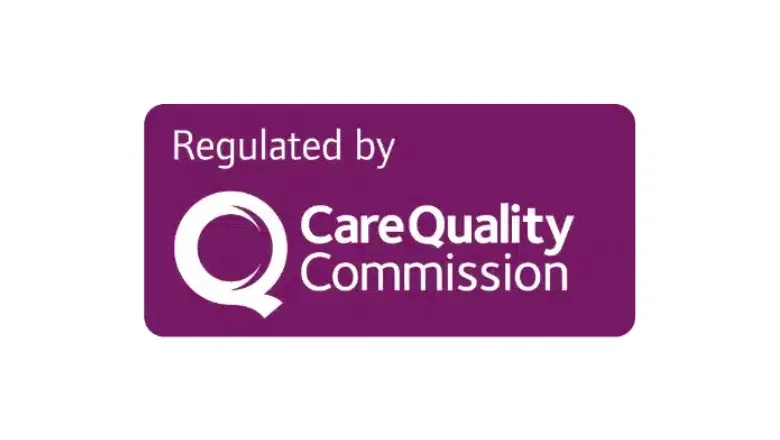Arm lift surgery, also known as brachioplasty, is a plastic surgery procedure designed to remove excess skin and fat from the upper arms to achieve a more contoured and firmer appearance. Here we discuss our best tips for smooth recovery and healing after an arm lift.
It is important to give your body the time to heal properly after arm lift surgery. It would be best if you tried to get proper rest and sleep for at least eight hours a day during the early phase after an arm lift. Getting enough sleep after arm lift surgery helps with the healing process. It is important to sleep in the optimal position after arm lift surgery to help your recovery and improve the final results of the procedure.
RELATED: Arm lift & Brachioplasty before and after gallery
Preparing for Arm Lift Surgery
An arm lift, also known as brachioplasty, is a surgical procedure that removes excess skin and fat from the upper arm to create a more toned and shapely appearance. Preparing for arm lift surgery can help ensure a smooth and successful procedure.
- Schedule a consultation: The first step in preparing for arm lift surgery is to schedule a consultation with a plastic surgeon with experience. During the consultation, the surgeon will examine your arms, discuss your goals and concerns, and explain the risks and benefits of the surgery.
- Medical evaluation: Your surgeon will also perform a medical evaluation to ensure that you are a good candidate for the surgery. This may include a physical exam, blood tests, and imaging tests.
- Stop smoking: If you are a smoker, you will need to stop smoking before the surgery to reduce the risk of complications.
- Stop taking certain medications: Certain medications, such as blood thinners, should be stopped before the surgery to reduce the risk of bleeding. Your surgeon will provide a list of medications to avoid.
- Arrange for transportation and help: The surgery is done under general anaesthesia. You will need to arrange for transportation to and from our Baker Street clinic, as well as someone to help you with daily tasks for a few days after the surgery.
- Follow instructions: Your surgeon will provide instructions on preparing for the surgery, including information on fasting and showering before the procedure. Following these instructions carefully is important to ensure a smooth surgery and recovery.
- Support: Emotional support before and after the surgery can be helpful. Consider talking to your friends and family about your decision to have surgery and asking for their support during the recovery process.
- Have realistic expectations: It’s important to have realistic expectations about the surgery’s results. While the procedure can improve the appearance and feel of the arms, it may not achieve the exact look or feel that you desire.
- Weight loss: Your surgeon may advise losing weight before the surgery as this can help to reduce the amount of excess skin and fat that needs to be removed and reduce the risk of complications.
RELATED: Types of brachioplasty
What to expect in the early postoperative period after an Arm Lift
The early postoperative period after an arm lift, also known as a brachioplasty, can be uncomfortable and require some downtime for recovery. Here are some things to expect:
- Pain and discomfort: You will likely experience pain and discomfort in the arm area after the surgery, which can be managed with medication prescribed by your surgeon.
- Swelling and Bruising: Swelling and bruising are normal after an arm lift surgery and should subside over time. Your surgeon may recommend using cold compresses to help reduce swelling.
- Drainage: Your surgeon may place small drainage tubes under the skin to remove excess fluid. These tubes will be removed within a few days after surgery.
- Bandages and dressings: Your surgeon will place them over the incision sites to protect them and help them heal. It’s important to keep these dressings clean and dry.
- Activity restrictions: You should avoid strenuous activities or heavy lifting for at least 2-4 weeks after the surgery. Your surgeon will give you specific instructions on when you can return to normal activities.
- Follow-up appointments: Your surgeon will schedule follow-up appointments to monitor your progress and address any concerns.
- Scarring: The incision site will be stitched and will leave scars. It will take time for the scars to heal and fade, but they will continue to improve over time.
RELATED: What is a mini arm lift?
Arm lift surgery recovery timeline
Recovery after arm lift surgery can vary for each individual, but here is a general timeline of what you can expect:
Week 1:
- The first week after surgery, you will likely experience some pain and discomfort. Your surgeon will prescribe medication to help manage pain.
- You will have bandages and dressings over the incision sites, which will need to be kept clean and dry.
- You will need to avoid any strenuous activity or heavy lifting for at least a week.
- You may be given a compression garment to wear, which helps to reduce swelling and support the arm as it heals.
Week 2:
- Pain and discomfort should start to subside during the second week.
- Your surgeon may remove the drainage tubes, and the bandages and dressings may be changed.
- The swelling will start to go down, and the incision sites will start to heal.
- You will likely be able to resume light activities, such as walking and gentle range of motion exercises.
Week 3-4:
- By the third or fourth week, you should start to feel better and have more energy.
- Incision sites will continue to heal, and you may be able to start resuming normal activities with some restrictions.
- You will have a follow-up appointment with your surgeon to monitor your progress.
Week 5-6:
- By this time, most of the pain and discomfort should be gone, and you should be able to return to your normal routine.
- You may be able to start light exercises, such as walking or yoga, but you should avoid any strenuous activities for a few more weeks.
- Scars will be more visible at this stage, but they will continue to improve over time.
Week 7-8:
- Most of the swelling will have gone down, and incision sites will be fully healed.
- You should be able to return to your normal exercise routine and other activities with the permission of your surgeon.
- Arm lift scars will continue to improve and fade over time.
Best sleeping position after arm lift surgery
After arm lift surgery, it’s important to maintain proper positioning to help reduce swelling and promote healing. The best sleeping position will depend on the specific details of your surgery and the recovery process, but here are some general recommendations:
- Sleep on your back: Sleeping on your back is the best position for the first few days after surgery, as it helps to reduce pressure on the incision sites and prevent stretching of the skin.
- Use pillows for support: Pillows can support your arms and keep them elevated, helping to reduce swelling and prevent blood clots.
- Avoid sleeping on your stomach: Sleeping on your stomach can put pressure on the incision sites and cause irritation or stretching of the skin.
- Avoid sleeping on your side: Sleeping on your side can put pressure on the incision sites and cause irritation or stretching of the skin.
- Follow your surgeon’s instructions: Your surgeon will be able to give you specific instructions on the best sleeping position for your recovery based on the specifics of your surgery.
- Be comfortable: It’s important to find a position that is comfortable for you and that allows you to breathe easily.
Top tips for a quicker recovery after an arm lift
Recovering from an arm lift can take several weeks, but there are things you can do to help speed up the process and promote a smooth recovery. Here are some top tips:
- Follow your surgeon’s instructions: Be sure to follow your surgeon’s post-operative instructions carefully, including information on how to care for your incisions, how to manage pain, and when to resume normal activities.
- Get plenty of rest: Your body needs time to heal after the surgery, so it’s important to get plenty of rest.
- Take medication as prescribed: Your surgeon will likely prescribe medication to help manage pain and discomfort after brachioplasty surgery. Be sure to take the medication as prescribed and avoid taking any over-the-counter medications without first consulting your surgeon.
- Wear a compression garment: Your surgeon may recommend wearing a compression garment for a period of time after the surgery. This can help to reduce swelling and support the arms as they heal.
- Eat a healthy diet: Eating a healthy diet that is high in protein, vitamins, and minerals can help to support the healing process. Avoiding processed foods, sugar, and alcohol can help to minimize inflammation and support overall health.
- Keep incisions clean and dry: Your incisions will need to be kept clean and dry to prevent infection. You will be instructed to clean the incisions with soap and water and to apply ointment as needed.
- Avoid smoking: Smoking can slow down the healing process and increase the risk of complications, so it’s important to avoid smoking after the surgery.
- Attend follow-up appointments: It’s important to attend all follow-up appointments with your surgeon to monitor your progress and address any concerns. Listen to your body: Recovery from an arm lift surgery can take several weeks, and it’s important to listen to your body and avoid any activities that cause pain or discomfort.
- Gentle exercise: Gentle exercises, such as walking and light range of motion exercises, can help to promote circulation and prevent blood clots. Consult with your surgeon on when you can start and what exercises are safe for you.
- Massage: Gentle massage of the arms, with the permission of your surgeon, can help to reduce swelling and improve the appearance of scars.
- Scar management: Proper incision site care can help minimise scarring and promote healing. Consult with your surgeon for the recommended scar management techniques.
- Seek support: Surgery can be an emotional process, so it’s important to have a support system in place before and after the surgery. Remember, arm lift recovery is unique for every individual, and it’s essential to follow your surgeon’s instructions to ensure a smooth and quick recovery. Consult with your surgeon if you have any concerns or questions.
Risks of arm lift surgery
Arm lift surgery, also known as brachioplasty, is a safe and effective procedure, but like any surgery, it does come with some risks. Here are some of the potential risks of arm lift surgery:
- Infection: As with any surgery, there is a risk of infection at the incision site. Your surgeon will provide instructions on how to care for your incisions to minimise the risk of infection.
- Blood clots: Blood clots can form in the legs or arms after surgery. Your surgeon will provide instructions on how to prevent blood clots and will monitor you for any signs or symptoms of blood clots.
- Haematoma: Haematoma is the accumulation of blood outside of the blood vessels. This could happen after surgery and can cause pain and swelling and affect the final result.
- Numbness or tingling: Some numbness or tingling in the arms may occur after surgery, but this is usually temporary.
- Scarring: Surgery will leave scars. Your surgeon will explain the type of scars you can expect and how to manage them.
- Unsatisfactory results: Although arm lift surgery can greatly improve the appearance of the arms, the results may not be exactly what you expected, or the results can be affected by factors such as weight gain, ageing, or other medical issues.
- Anaesthesia risks: As with any surgery, arm lift surgery carries risks associated with general anaesthesia, such as allergic reactions, breathing difficulties, and other complications.
- Asymmetry: Slight asymmetry may occur after the surgery, but most of the time, it is not significant or noticeable.
ARM LIFT RECOVERY FAQs
How long does it take to recover from an arm lift?
Bruising and swelling will be most marked during the first two weeks after surgery. Most patients can return to normal activities after six weeks, including exercise. It can take up to 12 months for arm lift scars to mature and fade.
How long will the arms be swollen after brachioplasty?
The arms often appear swollen for up to 2 weeks after surgery. After this time, swelling gradually improves. It is common for a mild amount of swelling to persist up to 8 weeks after surgery.
How long will I need to wear the compression garment after an arm lift?
You must wear a dedicated arm compression sleeve for up to 3 months after brachioplasty surgery.
When can I take a shower after brachioplasty?
Showering is allowed 48 hours after surgery, although you should try to avoid getting your dressing wet.
Does an arm lift leave a scar?
Armless incisions most commonly extend from the armpit down to the elbow. Your Surgeon will place the incision on the inner part of the arm to reduce its visibility. This makes arm lift scars much easier to hide in normal clothing.
Do arm lift scars fade?
Arm lift scars gradually fade over time. Although the scars will be raised and pink during the first six weeks, they will gradually flatten and fade to a white colour over the first 12 months after surgery.
What is the best sleeping position after a brachioplasty?
We recommend sleeping on your back with your arms in an elevated position for the first three weeks after brachioplasty surgery to improve recovery and minimise complications.
When will I see the final results of an arm lift?
The final results of an arm lift take between 3 to 6 months to appear once the swelling has disappeared and your scars gradually fade.
When can I exercise after brachioplasty?
Vigorous exercise should be avoided during the first week after a Brachioplasty. Light walks are allowed during the first few weeks after surgery for up to 20 minutes at a time. After six weeks, you may safely restart your normal exercise routine.
How much does an arm lift cost in the UK?
The cost of an arm lift will be determined by the extent of the procedure and the skills and experience of the surgeon you choose. Arm lift surgery includes preoperative and postoperative appointments, surgical fees, anaesthetic fees, and facility fees. Call us today on 0207 993 4849 to get a price estimate for a brachioplasty in London.
Is an arm lift worth it?
An arm lift, also known as brachioplasty, is a surgical procedure that removes excess skin and fat from the upper arms to create a more toned appearance. It can be a worthwhile procedure for individuals who have experienced significant weight loss, ageing, or genetics resulting in sagging skin on their upper arms. However, it is important to note that it is a major surgery, and it carries risks, as well as recovery time. A consultation with a plastic surgeon at Centre for Surgery is recommended to determine if an arm lift is the best option for you and to discuss the potential risks and benefits of the procedure.
Arm Lift Surgery at Centre for Surgery
Centre for Surgery in London is a specialist plastic surgery clinic with years of experience in excess skin removal procedures, including arm lift surgery. Our surgeons carry out many arm lift procedures each year at our state-of-the-art Baker Street clinic in Marylebone. If you would like to learn more about the benefits of an arm lift, call us on (020) 7993 4849 or complete the contact form below, and one of our patient coordinators will arrange an in-person consultation with a specialist surgeon.










